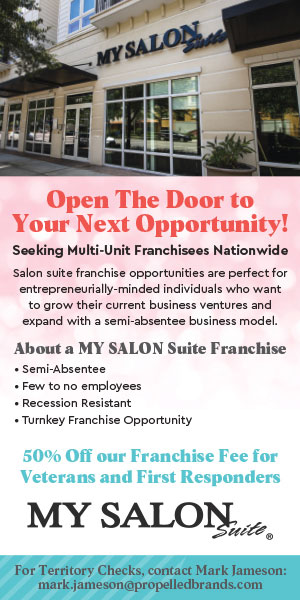6 Steps To Launching a Successful Customer Service Initiative That Lasts

Every company is guilty of having a bunch of great ideas and incredible initiatives born in a meeting room fizzle out and die, leaving management frustrated and cynical and employees skeptical about what the next program of the year, flavor of the month, or management-by-best-seller will be. The following 6 steps are how we at The DiJulius Group ensure that our consulting clients are seeing tangible results 12 months, 3 years, even 5 years later.
1) Create it
Whether you are creating your Customer Service Vision Statement, your Non-Negotiable Standards, or your Service Recovery (Zero Risk) Protocols, you must have a team that is tasked with this project. They are most commonly known as a steering committee, ideally composed of 12 to 18 people. This group should be made up not only of management, but also of representatives of nearly every department the company has, as well as some front-line employees. This will ensure the group as a whole is working for the best interests of the entire company.
This project also must have a leader, a champion such as a chief experience officer (CXE), who reports to the CEO/president and will lose sleep at night over the success of this project at every stage; not just in the short term, but also 6 to 18 months from now. When creating an initiative, the project champion must get the steering committee together for a workshop initially and, at a minimum, for a follow-up. Homework and exercises must be created to create the absolute best outcome possible. In between meetings, the project leader must manage regular communication between the steering committee members to ensure everyone is collaborating and staying on target with outcomes and deadlines.
2) Launch it
Creating your initiative can be exhausting. It should be exhausting, otherwise it won’t be taken seriously. Now the hard work starts. The only thing nearly as important as executive sponsorship is front-line sponsorship. Here is where many brands commonly make a major mistake. The steering committee may assume everyone in the organization will have the same passion and commitment to this initiative, but no one outside of the steering committee has been immersed in it for weeks, debating with passion what will help take the company to the next level. So there typically is a disconnect between the group that gives birth to the project and the rest of the organization. This is why it is so important to have a launch that gets everyone on board to understand why this initiative is so important to the company’s success, the customers’ well-being, and the employees’ future.
A launch involves communicating with everyone. And in that launch, a story must be told. Every story has a villain and a hero. The villain is what’s wrong with the way things are currently being done. The villain may be the competition, the status quo, price cutters, or the pain customers are experiencing. The hero is easy. The hero is your initiative and how it will change the company, the industry, your customers’ lives, and how it will solve their problem. You must be able to sell the purpose of your initiative to all your employees and get them to rally around it to rise up to defeat the villain. You also must make sure that 100% of your employees take part in the launch, either at the live presentation or by watching it online within a certain time frame.
3) Certify it
Just because your employees attended or watched the presentation online doesn’t mean they retained any of it. There must be a certification component. It is important to test each employee to make sure that they learned and retained the information from the launch. There are many ways to do this. One of my favorites is gamifying it, making it a competition between teams, departments, or locations. This makes it fun and a team-building activity.
4) Implement it
This is where most plans, projects and initiatives fail – at the implementation phase. You can create the greatest idea and get everyone to rally around it, but if you don’t have a solid implementation plan it will be just another good idea that never amounted to anything – because no one made sure there was a plan to roll it out effectively after the pep rally. Implementation is a rollout calendar of phases: crawl, walk, and run. This calendar must be timed with training and support materials.
5) Measure it
Every department, manager, and employee must know the key metric that measures the success of this initiative, e.g., retention rate, number of referrals, re-sign rate, closing ratio, conversion rate, customer satisfaction score, NPS. Not only must they know what it is, they also must see it daily and know exactly what affects it. Management and employees alike must obsess over this metric. Those hitting the goal should be celebrated loudly, while underperformers must be coached and convinced that this is the way you are operating, now and forever. Live it, love it, or leave it.
- Track and measure who is doing it consistently, recognize it, and coach it until it is being executed 100% consistently. (This must be measured immediately with the rollout to ensure employees know that it is serious and non-negotiable.)
- Measure that it has an impact on the customer. Do they recognize the value and is it affecting satisfaction levels and affecting the key metrics, e.g., average tickets, conversation rates, retention, referrals, resigns, NPS. (This can’t be measured for about 30 days and for 90 to 120 days to see the impact it is having.)
6) Sustain it
Be relentless. There is no ribbon-cutting ceremony for a world-class customer service organization. You never arrive. You just have to keep branding and advertising your customer service culture back to all your employees. Bring it up in daily huddles, and recognize and celebrate employees who are modeling the behavior. Continually play games and post your ROX (return on experience) results to show the performance of the company, teams, and individuals.
Conclusion
Customer service systems evolve. Some things work, but many others need tweaking: better training, support, technology, communication, and awareness. The steering committee must continue to meet regularly to develop new systems, as well as to evolve existing ones, constantly evaluating progress and defects.
Most of all, all the work done and rolled out must be part of new employee orientation and training so the future generations get it, provide consistency, and understand the legacy the company is built on. Only then will your company’s customer service be your single biggest competitive advantage.
John R. DiJulius III, author of The Customer Service Revolution, is president of The DiJulius Group, a customer service consulting firm that works with companies including Starbucks, Chick-fil-A, Ritz-Carlton, Nestle, PwC, Lexus, and many more. Contact him at 216-839-1430 or info@thedijuliusgroup.com.
Share this Feature
Recommended Reading:
Comments:
comments powered by Disqus| ADVERTISE | SPONSORED CONTENT |
FRANCHISE TOPICS
- Multi-Unit Franchising
- Get Started in Franchising
- Growth
- Operations
- Open New Units
- Leadership
- Marketing
- Technology
- Legal
- Awards
- Rankings
- Trends
- Featured Franchise Stories
| ADVERTISE | SPONSORED CONTENT |






 The franchise listed above are not related to or endorsed by Franchise Update or Franchise Update Media Group. We are not engaged in, supporting, or endorsing any specific franchise, business opportunity, company or individual. No statement in this site is to be construed as a recommendation. We encourage prospective franchise buyers to perform extensive due diligence when considering a franchise opportunity.
The franchise listed above are not related to or endorsed by Franchise Update or Franchise Update Media Group. We are not engaged in, supporting, or endorsing any specific franchise, business opportunity, company or individual. No statement in this site is to be construed as a recommendation. We encourage prospective franchise buyers to perform extensive due diligence when considering a franchise opportunity.